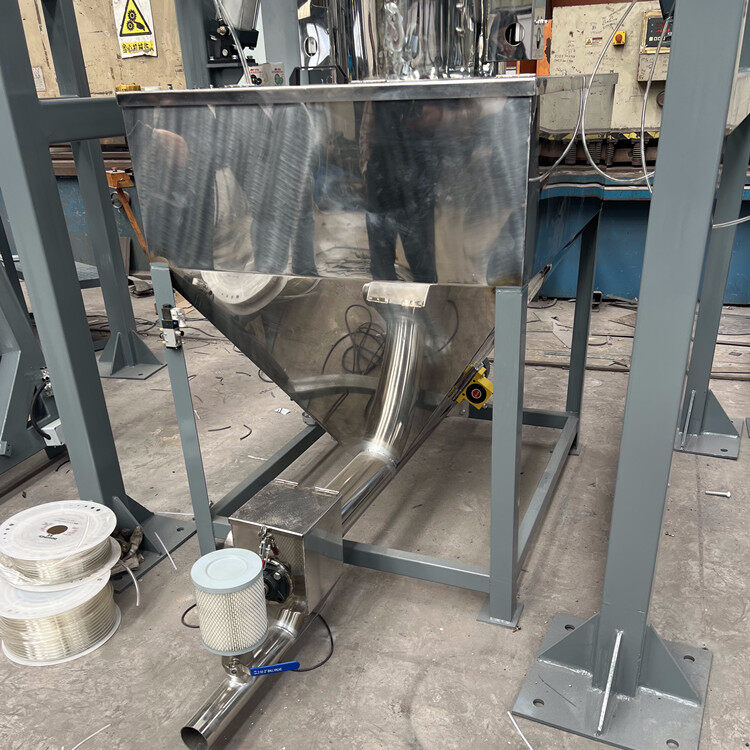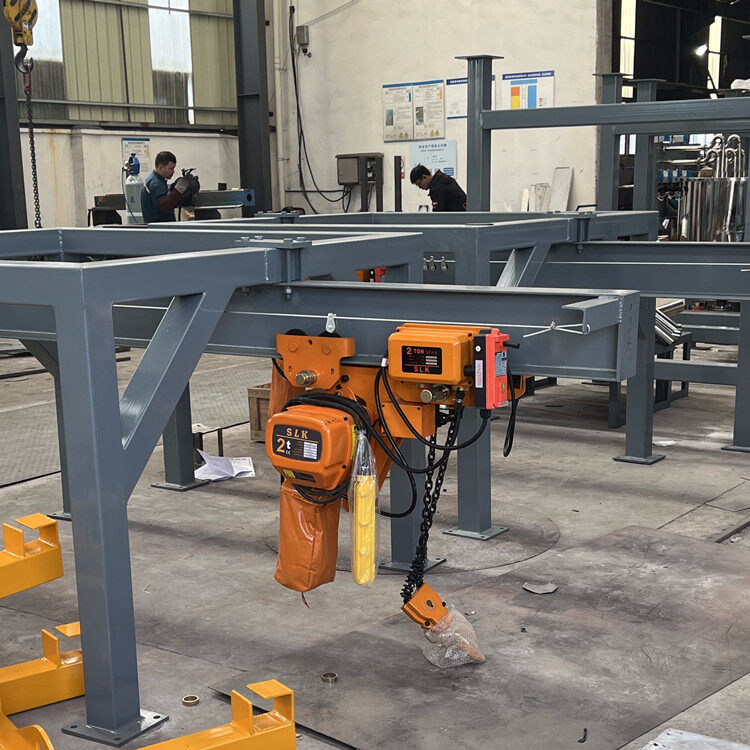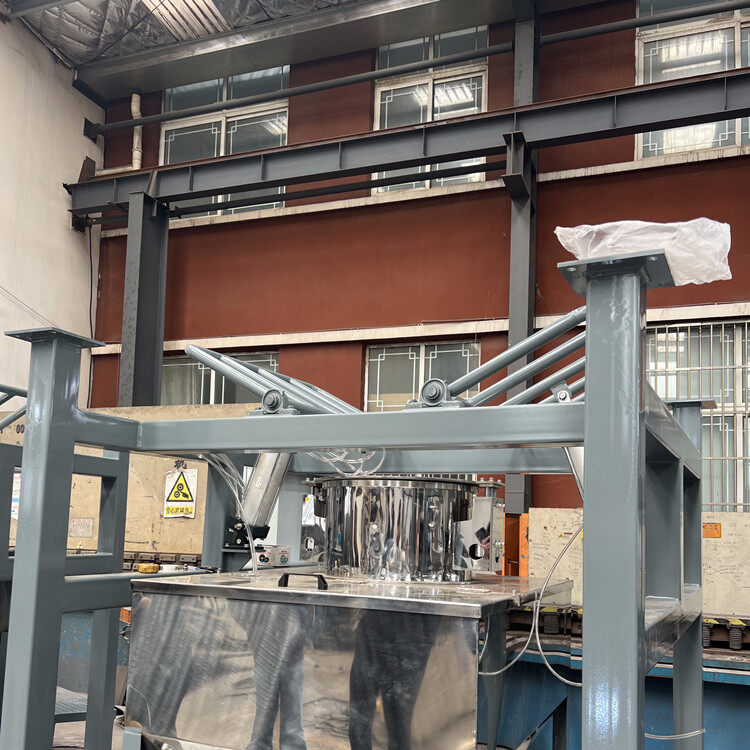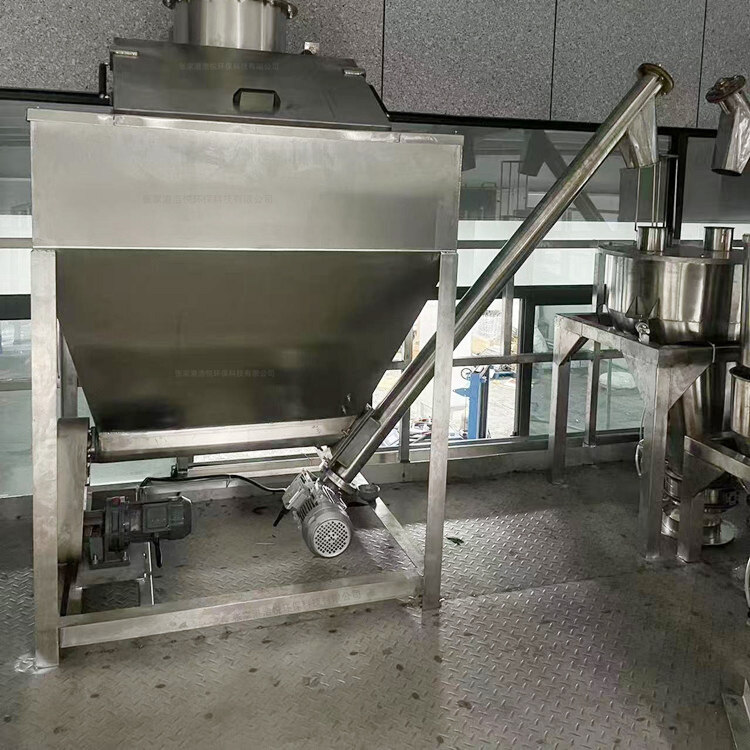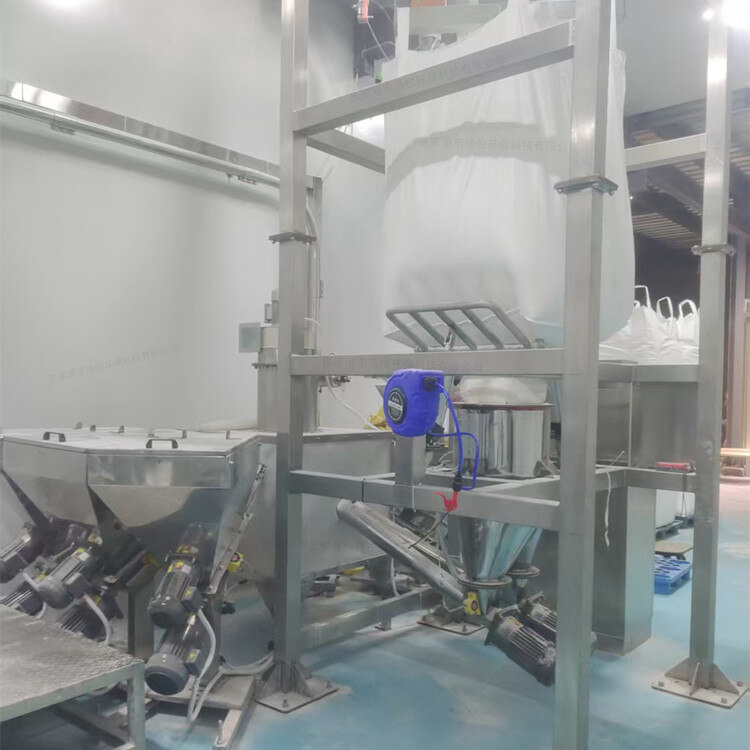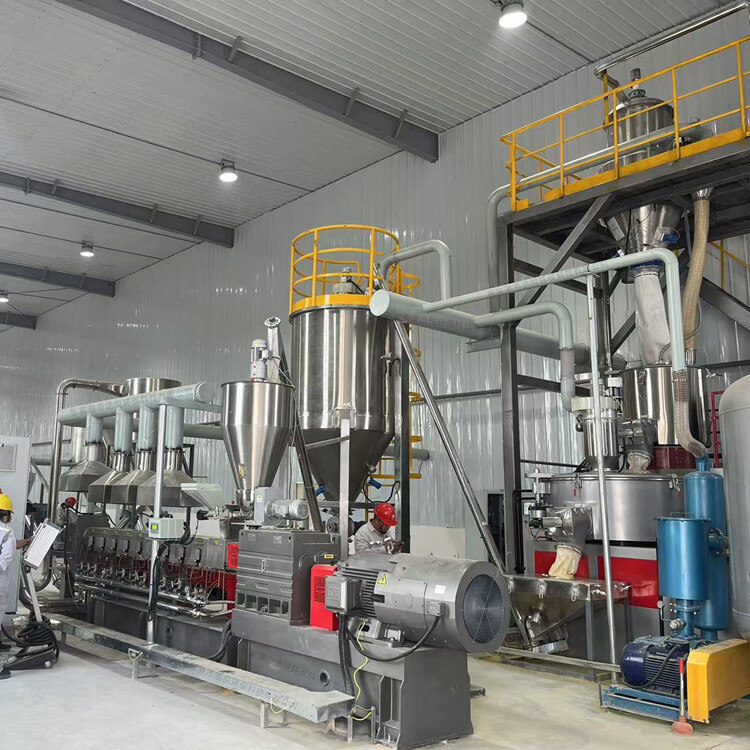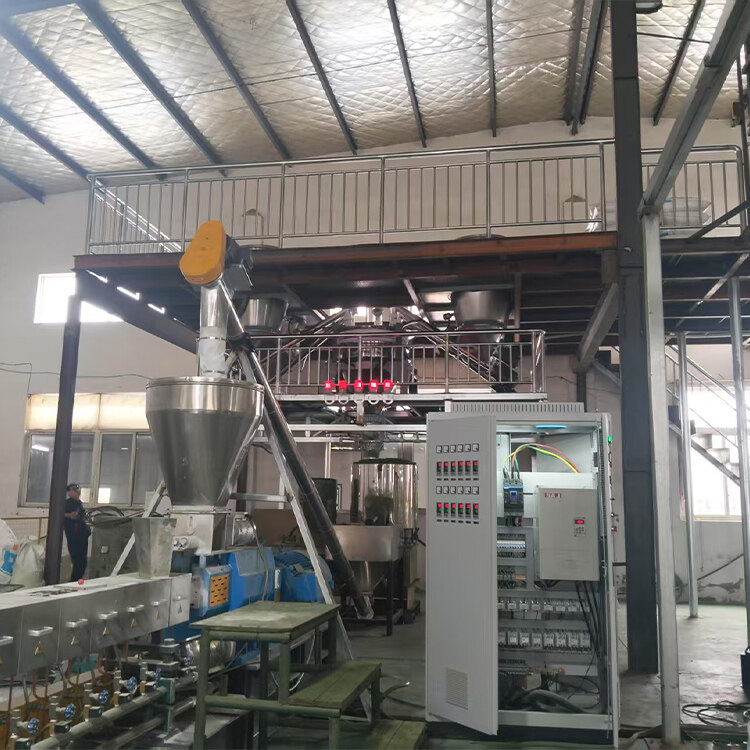- Introduction to automatic batching machine and fully automatic batching machine equipment
- The powder metering system tells you about the introduction of the mixing and drying machine
- 1000kg vacuum feeding machine
- Fully automatic small material batching system
- Research on Innovation of Automatic Weighing Machine Technology
- Design and operation of automatic batching system using PLC, industrial computer and frequency converter
Hanging gourd small package powder unloading station
- Category:Ton bag unloading station
- Hits:191次
- Release Date:2025-06-30
- Share:
- Inquiry
- Details
In the material handling process of modern industrial production, the ton bag unloading equipment serves as an important hub connecting the storage of ton bags with subsequent production processes, undertaking the key task of safely and efficiently transferring materials inside the ton bags. From precise feeding of chemical raw materials to clean unloading of food raw materials, this type of equipment, with its specialized design and automation functions, effectively solves the problems of low efficiency and serious dust pollution in traditional manual unloading. The following will provide a comprehensive and in-depth introduction to the ton bag unloading equipment from the aspects of equipment composition, working principle, core advantages, application scenarios, and development trends.
1、 Equipment core composition architecture
The ton bag unloading equipment mainly consists of six modules: ton bag lifting device, unloading rack body, bag breaking mechanism, material conveying unit, dust removal system, and control system. Each part cooperates with each other to form a complete unloading operation system.
(1) Ton bag lifting device
The ton bag lifting device is the starting point of the unloading process, and common types include electric hoist lifting, forklift assisted lifting, and hydraulic lifting platform. The electric hoist is connected to the sling of the ton bag through a steel wire rope or chain, and is controlled by an electric drive device to achieve precise positioning of the ton bag. It is suitable for small and medium-sized unloading scenarios; Forklift assisted lifting uses the fork of the forklift to lift the ton bag and place it on the unloading rack, with flexible operation and suitable for highly mobile work environments; The hydraulic lifting platform is driven by a hydraulic system to lift and lower, and can carry a large weight. It is commonly used for unloading large ton bags, with a maximum load capacity of 2-3 tons. These lifting devices are equipped with anti shake and anti fall devices to ensure the safety of the ton bags during lifting and movement.
(2) Unloading rack body
The unloading rack body is the main structure that supports ton bags and provides unloading space. It is usually welded from steel structures and has high strength and stability. The design height and width of the frame are customized according to the size of the ton bag and the unloading requirements, and can generally be adapted to standard ton bags that are 1-2 meters high. A ton bag fixing device, such as pneumatic or manual clamps, is installed on the frame to firmly clamp the mouth of the ton bag and prevent it from slipping or material leakage during unloading. Some unloading racks are also equipped with rotating mechanisms, which can achieve multi angle unloading of ton bags and meet the feeding needs of different production equipment.
(3) Bag breaking mechanism
The bag breaking mechanism is a key component for achieving smooth unloading of ton bag materials. According to the material characteristics and unloading requirements, there are mainly the following forms:
Blade cutting type: A sharp blade installed on the unloading rack cuts through the bottom or side of the ton bag during its descent, allowing the material to fall naturally. This method is suitable for granular and powdery materials with good fluidity, such as plastic particles, flour, etc., but care should be taken to avoid blade damage to the materials.
Gravity extrusion type: using the gravity of the ton bag itself, combined with extrusion rollers or pressure plates, to extrude the material inside the ton bag. This method causes minimal damage to materials and is suitable for fragile or sensitive materials, such as coffee beans, nuts, etc.
Vibration bag breaking type: Install a vibration motor on the unloading rack to loosen the material inside the ton bag through vibration, accelerating the unloading process. Commonly used for materials with high viscosity or poor fluidity, such as sludge, clay, etc.
(4) Material conveying unit
The material conveying unit is responsible for conveying the unloaded materials to subsequent production equipment or storage containers, and different conveying methods are used according to the material form and conveying distance:
Pneumatic conveying: For powdered materials such as cement, carbon black, etc., negative or positive pressure airflow is formed in the pipeline through a fan to transport the materials to the designated location. This method has long conveying distance and good sealing performance, which can effectively prevent dust from overflowing.
Spiral conveying: using the rotation of spiral blades to push materials forward, suitable for short distance conveying of granular and powdery materials, with the characteristics of compact structure and small footprint.
Belt Conveyor: Conveying materials through the continuous operation of a belt, with a large conveying capacity and stable operation, commonly used for conveying materials with large particles or heavy weight, such as ores, grains, etc.
(5) Dust removal system
The dust removal system is an important component in ensuring a clean discharge environment and the health of operators. Bag filter or filter type dust collectors are usually used, with suction ports set at key positions of the discharge port and conveying pipeline. The dust generated during the discharge process is sucked into the dust collector by the negative pressure generated by the fan. The filter material adopts high-efficiency polytetrafluoroethylene (PTFE) membrane filter material, with a filtration accuracy of 0.1-1 μ m and a dust removal efficiency of over 99%. At the same time, equipped with pulse blowback device, regularly clean the accumulated dust on the surface of the filter material to ensure the continuous and efficient operation of the dust removal system.
(6) Control system
The control system is based on PLC (Programmable Logic Controller) as the core, paired with a touch screen human-machine interaction interface (HMI). The operator can set various parameters of the unloading process through the HMI, such as the lifting speed of the ton bag, the bag breaking method, and the start stop time of the conveying equipment. During the operation of the system, real-time monitoring of the operating status of various equipment is carried out, such as the weight sensor data of the lifting device, the pressure value of the dust removal system, the current of the conveying equipment, etc., and compared with the preset values. When abnormal situations occur (such as overload, blockage, and excessive dust concentration), the control system immediately issues sound and light alarms and automatically takes corresponding measures, such as stopping equipment operation, starting backup equipment, etc. In addition, the control system also supports integration with the factory's DCS (Distributed Control System) or MES (Manufacturing Execution System) to achieve remote monitoring and centralized management of production data.
2、 Working principle and process
The workflow of the ton bag unloading equipment can be divided into five main stages: ton bag lifting, fixed positioning, bag breaking unloading, material conveying, and dust treatment. Firstly, the ton bag is lifted to the top of the unloading rack using a ton bag lifting device, and the opening of the ton bag is clamped and fixed using a fixing device. Next, select the appropriate bag breaking mechanism based on the characteristics of the material. For example, for powder materials with good fluidity, activate the blade cutting bag breaking mechanism to cut the bottom of the ton bag, and the material will fall into the receiving hopper below under the action of gravity.
After the material enters the receiving hopper, it is transported to the target position by the material conveying unit. For example, if pneumatic conveying is used, the fan starts to create negative pressure in the pipeline, which sucks the material into the pipeline and transports it to the storage bin; If it is a screw conveyor, the screw conveyor will start running and push the material to the next process. During the unloading process, the dust removal system works synchronously, and the dust generated by the suction port is sucked into the dust collector for filtration and purification. The purified air is discharged outdoors, and the dust is collected in the dust collection bucket and cleaned regularly.
The entire unloading process is carried out under the unified coordination of the control system, ensuring that each link is closely coordinated and operates in an orderly manner. After the unloading of materials in the ton bag is completed, the ton bag lifting device will remove the empty bag, and the equipment will automatically reset to prepare for the next unloading operation.
3、 Core technological advantages
(1) Efficient and safe unloading operations
The ton bag unloading equipment greatly shortens the unloading time through automated lifting, bag breaking, and conveying devices, and increases efficiency by 3-5 times compared to traditional manual unloading. At the same time, the equipment is equipped with various safety protection devices, such as anti fall, anti overload, emergency stop buttons, etc., effectively ensuring the personal safety of operators and reducing the probability of accidents.
(2) Low dust pollution and environmental friendliness
The fully enclosed unloading design and efficient dust removal system minimize dust leakage during the unloading process, and the workshop dust concentration can be controlled within the occupational health standard range (such as ≤ 10mg/m ³). Reducing dust pollution not only improves the working environment, but also complies with environmental regulations, avoiding companies from facing penalties for excessive dust emissions.
(3) Wide material adaptability
According to the characteristics of different materials (such as particle size, humidity, flowability, corrosiveness, etc.) and production process requirements, flexible bag breaking methods and conveying equipment can be selected to achieve unloading of various types of materials such as granular, powdery, block, etc., with a wide range of applications.
(4) Intelligent and convenient management
The advanced control system enables automated operation and remote monitoring of the unloading process. Operators do not need to be on site and can remotely view the equipment's operating status, adjust parameters, and handle faults through mobile phones or computers. The operation data of the equipment is automatically recorded and generated into reports, which facilitates production management, equipment maintenance, and cost accounting for enterprises.
4、 Application scenarios
(1) Chemical industry
In the production and processing of chemical raw materials, ton bag unloading equipment is used to unload various chemical materials, such as plastic resins, rubber additives, fertilizer raw materials, etc. For example, in the plastic pellet production workshop, resin pellets are precisely discharged into the extruder hopper through ton bag unloading equipment, ensuring production continuity while avoiding dust pollution that affects product quality.
(2) Food industry
In the field of food processing, it is used for unloading powdered raw materials such as flour, starch, milk powder, sugar powder, as well as granular raw materials such as nuts and beans. The equipment is made of food grade stainless steel material, with a smooth and easy to clean surface that meets food hygiene and safety standards, preventing material contamination during unloading and ensuring food safety.
(3) Building materials industry
In the production of building materials such as cement, dry powder mortar, gypsum powder, etc., ton bag unloading equipment unloads raw materials from ton bags and transports them to mixing equipment or storage bins to improve production efficiency. Its wear-resistant and dustproof characteristics make it suitable for working environments with high dust and strong material wear in the building materials industry.
(4) Other industries
In the mining industry, it is used for unloading materials such as ore powder and coal powder; In the new energy industry, achieve the discharge of materials such as positive and negative electrode materials for lithium batteries, electrolyte additives, etc; In the environmental protection industry, the unloading treatment of materials such as sludge and industrial waste has demonstrated good applicability and reliability.
5、 Development Trends
In the future, powder unloading stations will develop towards intelligence, integration, and greening. In terms of intelligence, artificial intelligence and machine vision technology are introduced to enable the equipment to automatically recognize the type of ton bag, detect the remaining amount of materials, and adjust the unloading parameters autonomously based on the characteristics of the materials; In terms of integration, it deeply integrates with the enterprise's warehouse management system and production control system to achieve full process automation and information management from ton bag storage, unloading, transportation to production; Greenization is reflected in further optimizing dust removal technology, reducing equipment energy consumption, adopting environmentally friendly materials, and promoting sustainable development of the industry. At the same time, with the popularization of industrial Internet of Things technology, remote operation and predictive maintenance of equipment will become a development focus, effectively reducing downtime and improving the comprehensive utilization rate of equipment.


